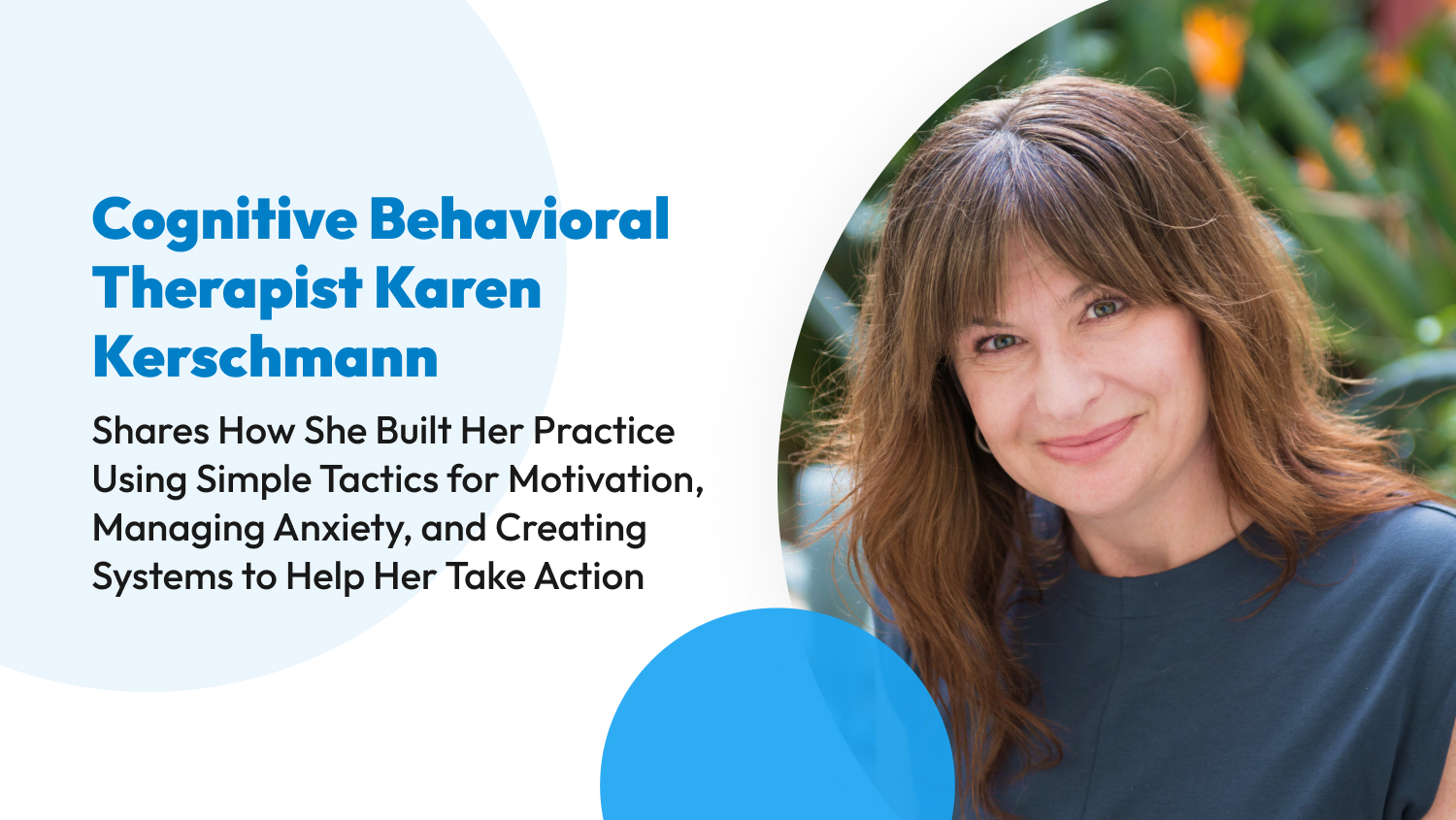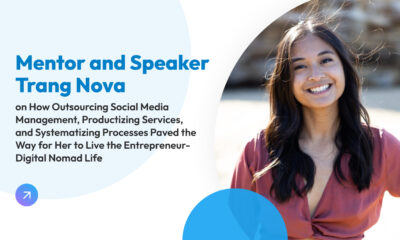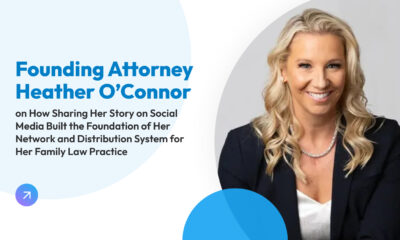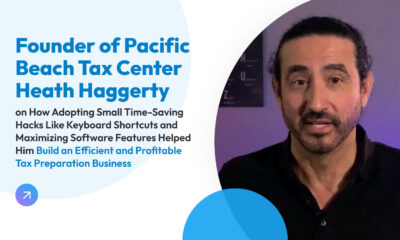Case Study
Cognitive Behavioral Therapist Karen Kerschmann Shares How She Built Her Practice Using Simple Tactics for Motivation, Managing Anxiety, and Creating Systems to Help Her Take Action
Karen Kerschmann discovered her love for therapy when she was still working full-time as a social worker. After some bold moves and a lot of smaller consistent actions to build a private practice, she now has a successful business in a specialty that both excites her and gives her a great sense of purpose.
Let’s look at some key milestones in building her business and the tools, systems, and people that helped her along the way. Don’t forget to check out her Read-Listen List and her Productivity Quick Stack Reference at the end of the article.
Table of Contents
- Starting
- Growing
- Scaling and Success
- Hindsight: What Kerschmann would have done differently
- Don’t Reinvent the Wheel
- Wrap Up
- Kerschmann’s Read-Listen List
- Kerschmann’s Productivity Stack Quick Reference
- More about Karen Kerschmann
Starting
Challenge 1: Starting a private practice as a therapist
After earning her master’s degree in social work, Kerschmann joined Child Protective Services (CPS). She loved working with kids and found fulfillment in supporting them through the foster system and group homes. But she was frustrated with the bureaucracy within the government agency and her inability to drive change. She recalls, “I wasn’t a changemaker. And one thing I’ve learned about myself is that doesn’t work for me.”
Solution: She found an outlet working as a therapist in the evenings after her government job. She says, “I just really loved it. I dipped my toe in the water and tried many things out. The more I listened to myself, and the more I noticed where I lit up, which was in these one-on-one conversations with people, the more I knew it was the right direction.”
She got credentialed to join various insurance companies’ provider panels. This way, she could get therapy clients while she worked on establishing her name in the field.
Kerschmann happily worked 60- to 80-hour weeks, juggling her day job and moonlighting as a therapist at night. She enjoyed working on different things, the new challenges that faced her every day, and learning about how to run a practice as a business. In 2006, after about two very busy years of working at both CPS and her private practice, she finally left her government job.
This initial stage of her therapy practice gave her the opportunity to identify what niche to pursue. Having generalized anxiety disorder herself, she found herself gravitating towards high-functioning adults with anxiety-based disorders, such as obsessive-compulsive disorder and panic disorder.
She found this niche interesting not just because it was relatable but because she also knew these types of conditions could be managed. She tells us, “It’s one of the most treatable conditions in the United States, and it’s also the most pervasive condition. So it gives me a lot of purpose to work with this group of folks.”
People: Kerschmann
Systems: Market testing, contracting with insurance
Tools: Calendar like Google Calendar for booking appointments, yellow pad for note-taking, client intake form for therapy clients
Challenge 2: Dealing with insurance
While contracting with different insurance companies got clients through her door, the revenue didn’t come in as fast. Rates for accredited mental health providers are quite low to begin with, with some as low as $30 an hour. On top of that, Kerschman, in her earlier years of private practice, dealt with a whopping 70% denial rate on her insurance billings.
Solution: Kerschmann did billing on her own for a while, so she knew the ins and outs of the process. It was a lot of administrative paperwork, and things like using the wrong form, inputting the wrong code, or missed deadlines could get a billing denied or rejected.
She decided to hire a few medical billers to take care of this time-consuming task for her. Having these professionals handle the collection, submission, and follow-up of information related to insurance billings helped minimize errors and missed deadlines. Her medical billers got her denial rate from 70% down to 5%.
Meanwhile, Kerschmann also continued to advocate, write letters, and demand that insurance providers pay out more to their accredited healthcare professionals.
People: Kerschmann, medical billers
Systems: Outsourcing to experts
Tools: Job boards like Indeed to find freelance medical billers, insurance billing forms used to claim payments from insurance companies
Challenge 3: Distribution: How to build a client base outside of insurance
Aside from clients who found her through the insurance network, Kerschmann also got leads from her old government job. Some of the group homes she worked with called her to work with their foster kids.
But she needed to branch out to increase her income. So she also had to figure out how to market her services.
Solution: Kerschmann tried a few things for lead generation, like cold calling. She gamified her marketing tasks to motivate herself, assigning more points (that can be converted to rewards) to accomplish tasks she really disliked.
She tells us, “I hated cold calls. The things I hated, I would get more points for. And so if I garnered a certain amount of points [from cold calling], and I love food – I would get a steak. Gamifying helped me move forward. If I was to do it again, I think what I would do is —have somebody to partner with and say, ‘Hey, can you keep an eye on this for me? Will you celebrate with me?’”
Kerschmann learned over time that results from marketing efforts might not be quick, but “It takes patience. It’s a mountain of pebbles; it’s something little you do every day.”
People: Kerschmann
Systems: Gamifying marketing efforts/tasks that are unpleasant
Tools: Google, LinkedIn, and Facebook to find leads for cold calling, calendar like Google Calendar to set appointments, yellow pad to take notes
Growing
Challenge 4: Raising rates and moving away from an insurance-based business model
In spite of the reliability of a client pool from the insurance network, Kerschmann, soon after starting her private practice, decided to shift to cash-pay. The insurance rates were simply too low. Some of her peers were not even making minimum wage!
Solution: She shares, “I gradually got off [each insurance contract] – very, very scary. But for me, sometimes I have to do something dramatic to put a fire under my rear.”
Apart from taking away her reliable sources of clients and income, Kerschmann also had another motivator to grow her business. “I chose an apartment that those days was expensive to me. It had a beautiful view, and I’m a big fan of views. I said, ‘Okay, if I don’t make the money for this, I’m in trouble, I have to move.’ So that was my fire.”
As she terminated her insurance arrangements one by one, she focused on building and optimizing her website as another lead magnet. The motivation and marketing efforts worked, and by her second year in private practice, she had made six figures in revenue.
People: Kerschmann, web developers
Systems: Performance pressure
Tools: Letters to end insurance contracts, job boards like Indeed to find freelance web developers, Calendar, iPhone to book client appointments, WordPress for the website
Challenge 5: Distribution: maximizing the website for lead generation
But getting her website to the stage where it could reliably pull in a good number of leads was a challenge and a learning process itself. At the start, around 2004 to 2005, Kerschmann hired developers to build this out for her. But she struggled when elements on the website broke, and the web guys would not be available, or they would have some conflict among themselves.
Kerschmann also realized, “There are things that I found I want to do myself because if I don’t do them, I’m not going to be happy.” This included her website design, which she really wanted to set the direction for and own.
Solution: After about four years of working with developers, Kerschmann started learning how to edit, maintain and redesign her website. She taught herself through Googling and hands-on practice how to code, make quizzes, and even do SEO for her site.
She didn’t take any courses on web design. She tells us, “I am not good at classes. I’m not a good listener, at least with technical things. What I have found with technical things is I need to be hands-on. And so once again, I took risks, learning that the world doesn’t fall apart if something breaks.”
She treated it as a hobby, and that made the learning process fun and interesting for her. For SEO, she treated it like a ‘bunch of experiments’ of throwing things against a wall to see what sticks.
The website eventually became one of her main sources of new leads. Today, her business is about 50% referrals and 50% from the website.
People: Kerschmann, web developers
Systems: Learning by doing, treating it as a hobby, trying different approaches to “see what sticks”
Challenge 6: Dealing with overwhelm and anxiety
Kerschmann has accomplished a lot since starting her private practice 19 years ago. Having generalized anxiety and panic disorder herself, Kerschmann had to learn to manage feelings of overwhelm in her personal and professional life.
We’ve learned about how she turns unpleasant tasks into a game and treats a new challenge like a hobby. What other strategies and systems does she use to prioritize tasks, stay on top of her deliverables and get herself motivated when there’s too much on her plate?
Solution: Kershcmann tells us that she uses a lot of paper and non-digital systems to get her thoughts in order. She has a giant chalkboard at home that she uses as a brain dump wall. She writes down anything she feels is important on that chalkboard, like a podcast episode and time stamp where she heard something inspiring, something her son asks her to buy, or anything that pops into her mind. If anything on her brain dump is important enough, it will find its way to the appropriate to-do list. For business-related ideas, she uses a yellow pad for her to-do lists.
When a to-do list starts to look overwhelming, she will highlight three things to focus on. If a messy list with three tasks highlighted is still too much, she will transfer those three tasks into one Post-it, so she can focus on them for one full day. She will even put out another Post-it with the words, “One thing at a time.”
When she is feeling particularly overwhelmed, she breaks down tasks into the smallest steps that are much easier to execute. For example, to get the laundry done, she would write the first task as ‘put the laundry together,’ then ‘put them in the washer,’ and so on. Once she is able to move forward with the baby steps, she gains momentum to accomplish the full task. She shares with us, “I use breaking things down for clients with depression and anxiety. Whether it’s overwhelm or the lack of motivation, breaking things down into small, small bits is incredibly useful.”
To stay organized in her clinical practice, Kerschmann also uses a system she devised when she worked in government. She would assign tasks to a 1) to-do list, 2) a pending list, or a 3) to-file list. Then she sets admin days to work on the to-file and pending lists.
People: Kerschmann
Systems: Brain dumping, creating to-do lists, breaking down tasks into smaller, more manageable chunks, assigning “admin days”
Tools: Wall Chalkboard, yellow pad to-do lists, Post-its, highlighters
Challenge 7: Protecting her clients’ data
Kerschmann is particularly concerned about privacy breaches or client records being hacked and leaked. In spite of electronic records being all the rage, as much as possible, she wants to avoid uploading personal information onto a server or cloud storage.
Solution: Kerschmann is sticking with paper records for her client session notes, and these are securely kept at her home. She uses a storage facility specifically for medical records for her archive files.
When she started having to practice from home because of the COVID lockdowns, she began to use the system intakeQ. This is a HIPAA-compliant platform where you can create the intake paperwork, the release of information, or credit card authorizations (she deletes card data immediately after use). She also uses a HIPAA-compliant fax.
People: Kerschmann
Systems: Limiting digital records, securing all paper records on and off-site
Tools: Yellow pad, medical storage facility, intakeQ
Scaling and Success
Challenge 8: Delegation: When and how to hire
Kerschmann had hired several times for her business, but she admits she is still hesitant about outsourcing work today.
She told us how one of her billers from her insurance days defrauded her of a substantial amount of money. “I had to sue one of my medical billers. I lost about $30,000, and I sued her in Small Claims Court just to get $10,000. It is a tremendous amount of trust that you put in somebody.”
Her frustrations with the web developers were another factor. She ended up learning web design because she couldn’t rely on them and because she wanted to have more creative control.
Solution: She has learned from previous hiring mistakes not to rush hiring. One prerequisite is that she understands and knows the ins and outs of the job she wants to outsource. This way, she can better communicate what she needs from someone she hires and, at the same time, can tell when they aren’t doing a great job.
People: Kerschmann
Systems: Knowing the ins and outs of jobs to be outsourced before hiring
Hindsight: What Kerschmann would have done differently
Kerschmann thinks one thing she could have done better was managing her boundaries when it came to her time and boundaries around how other people treat or possibly take advantage of her.
She has learned, “Not everything’s a fire that you need to put out today. Also, I’ve had to become aware of what’s my responsibility or what my issues are, and when somebody tries to give me theirs, I’ll hand it back to them.”
She credits this growth in protecting her boundaries to her mentor Sherry Reasbeck, a therapist who has great business sense as well.
Don’t Reinvent the Wheel
Kerschmann’s message to her interns and post-master’s clinicians is to keep things simple. Don’t spend time recreating something for which a template exists, like patient information forms, informed consent, and legal forms. Look for things that already work, and test and vet them.
Wrap Up
Kerschmann injected fun, a love of learning, and a lighthearted approach to what can be daunting and overwhelming tasks for a solopreneur starting their business journey. Gamifying marketing efforts, treating website building as a hobby, and experimenting with SEO were great tactics that kept her motivated.
But she knew when to apply pressure on herself as well. When she got off the insurance panels and rented a pricey apartment, she knew that was like setting an income target for a limited timeframe.
She uses very few digital tools and manages well with a chalkboard for brain dumping, a yellow pad, Post-its for to-do lists, and paper records for safekeeping her clients’ information. Finding these systems and tools that work for you takes self-knowledge, experimentation, and a willingness to stick with what works, despite what is popular or what everyone else may be promoting.
She continues to work in her niche of adults with anxiety disorders and provides clinical supervision to associate social workers and clinical counselor interns. She also still works with current and former foster youth, as their welfare remains an important advocacy for her to this day.
Kerschmann’s Read-Listen List
- Eat That Frog audiobook by Brian Tracy
- The 5 Second Rule: Transform your Life, Work, and Confidence with Everyday Courage by Mel Robbins
- Deep Work by Cal Newport
Kerschmann’s Productivity Stack Quick Reference
Starting
Growing
- Insurance Termination Letters
- WordPress
- Wall Chalkboard
- Post-its
- Highlighters
- Medical storage facility
- intakeQ
Scaling and Success
More about Karen Kerschmann
Karen Kerschmann contributes to the field through research and community action. Her work providing clinical consultation is acknowledged in the American Psychiatric Association’s DSM-5. Also, Karen’s work with the cognitive behavioral process in teens has been acknowledged in the professional journal, The Review of Education, Pedagogy & Cultural Studies. She is also a board member of the San Diego Cognitive Behavioral Therapist Consortium.
You can get in touch with her through her website: https://therapyinsd.com












